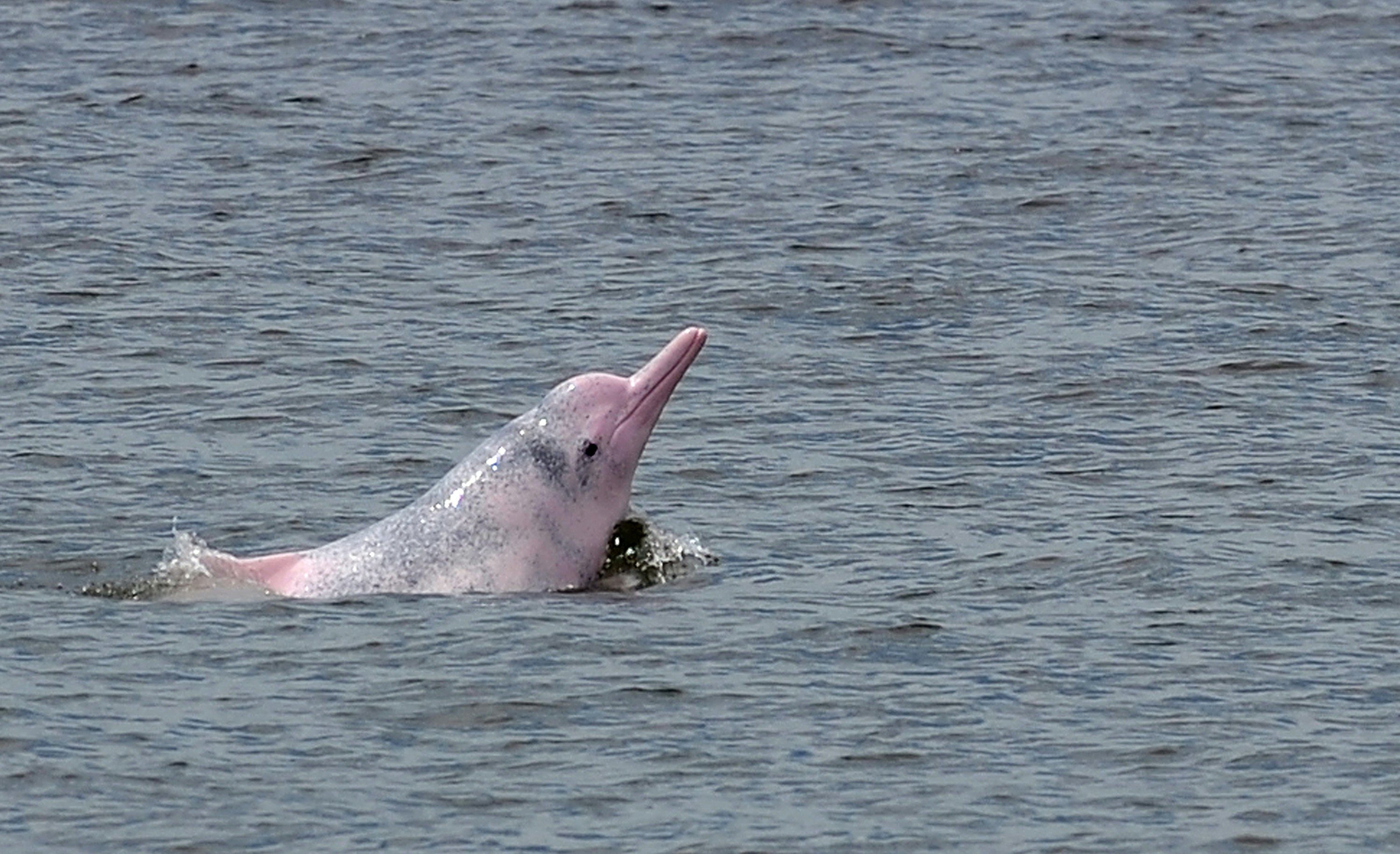Rare pink and white dolphins return to the waters of Hong Kong

Sep 18, 2020 • 2 min read

Chinese white dolphin or Indo-Pacific humpback dolphin, nicknamed the pink dolphin, swims in waters off the coast of Hong Kong ©AFP via Getty Images
Rare Indo-Pacific humpback dolphins are making a comeback in the waters of Hong Kong. Scientists say their numbers have increased in recent weeks thanks to a pause in high-speed ferry traffic as the pandemic slows transport in the area.
For years these dolphins, otherwise known as Chinese white dolphins, or pink dolphins, have avoided the Pearl River Delta in Hong Kong in order to stay out of the way of the high-speed ferries that cut through the waters daily. But now researchers say the number of Indo-Pacific humpback dolphins in the area has jumped by 30% in recent months, ever since boat traffic was suspended in February due to the pandemic.

Dr Lindsay Porter, a senior research scientist with the University of St Andrews, told Reuters that these waters, which were once the most congested waterways in Hong Kong, have become more dolphin-friendly amid the pandemic. "I’ve been studying these dolphins since 1993 and I’ve never seen anything like this dramatic change before, and the only thing that changed is 200 ferries stopped traveling before."
Dr Porter has been working with local conservation groups, including WWF Hong Kong, to study the dolphins in the Pearl River Delta. Drones have been dropped in the water to monitor their activity, which includes socializing, splashing about on the water and sex, reports the Guardian.

According to WWF Hong Kong there are about 2500 in the entire delta, but the group said they have observed a "worrisome decrease in the number of young dolphins" in Hong Kong's waters. "I sometimes feel that we’re studying the slow demise of this population, which can be really sad," Dr Porter told Reuters. Chinese pink and white dolphins in Hong Kong are particularly vulnerable to sewage and chemicals that are dumped into the harbour daily, as well as overfishing, boat traffic and coastal development.
WWF Hong Kong has been advocating for the government to designate Marine Protected Areas (MPAs), and to declare a development-free Dolphin Conservation Management Area in the western and southern Lantau waters by 2024, so that pink and white dolphins have safe feeding and socializing habitats.
In a statement, the group said: "these threats have had a major and cumulative impact on the population for years. It is necessary to take a proactive approach in order to conserve the remaining population of the species before it’s too late."
You might also like:
The Pink Dolphins of the Pearl River
Oceans restored by 2050? Scientists report it can be done
Watch dolphins swim through glowing bioluminescent waters off the California coast




